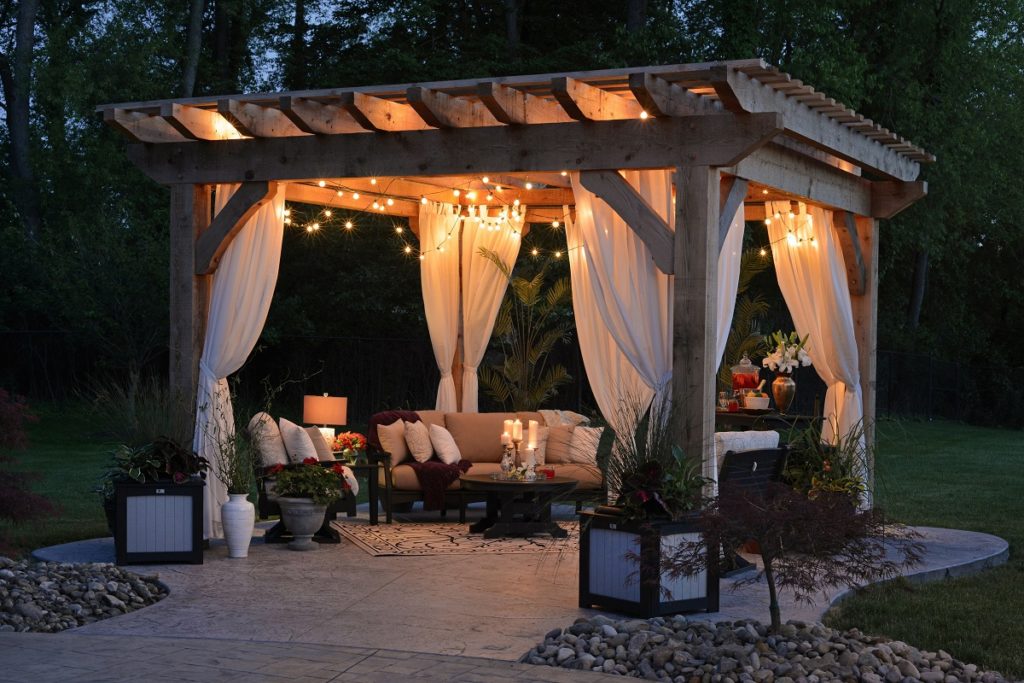You can’t deny that chilling out at your patio while you’re talking to your friends is a good time. Whether you’re cooking some barbeque, working on your laptop, or watering your plants, patios are one of the most popular external structures of a home. Patios have become so popular in the fast few years that if you search about ‘exterior design’ on search engines, there’s bound to be a photo of a house with a patio.
However, despite the patio’s popularity, it’s also one of the most exposed parts of a home if ever there’s a storm that’s passing through. A good majority of land in Australia gets battered by strong winds and storms. In some cases, thunderstorms will produce winds that will blow up to 90 kilometres an hour or even more. Some of the strong were measured in Queensland at 196 kilometres an hour. In most cases, building materials and other external structures can only withstand around 100 to 144 kilometres an hour; anything more than that and most structures will uproot and can become flying debris.
While most of us are confident that our home will be able to withstand strong winds from storms, there’s no guarantee that other structures that we have outside our homes will be able to hold its ground.
Minimising Damage from Strong Winds
During a storm, it’s expected that there will be structural damages to your home. The most that people can do during a storm is to minimise damage reinforcing some of the most vulnerable areas of your external structures and your home’s sidings.
Preparing Ahead

Debris from storms causes a good percentage of structural damages. While it’s essential to make sure that our home is protected from the wind, we shouldn’t overlook damage from impacts. As such, trimming foliage that might be close to our can help mitigate debris from falling on our windows and roof. Additionally, impact-resistant roofing materials can help against falling debris and hailstorms.
Enclosing Openings
There’s a common myth that you should open all windows of your home when there are strong winds, contrary to what most people are saying, this could lead to more damages. Not only will this overall lower the temperature of your home, but the right of air pressure can blow off your roof and cause damage to supporting structures. Thus, closing all airways that will become an access point inside your home is recommended.
Windows might flap inwards when they’re exposed to wind. The repeated flapping of these windows can cause damage to your window’s hinges and the interior of your home.
For patios that are naturally set outside your home, there are no windows and walls that will protect it from high winds. What’s a suitable way of protecting it from these strong winds? Patio enclosures are an excellent way of keeping wind outside of your patios, which can minimise damage.
Not only will enclosures direct the wind, but it’s also a stylish way of letting ambient lighting into your patio while still creating a protective barrier. If you’re not sure where you can get patio enclosures, you can look for pricings through websites.
Holding Down Your Patio
One of the reasons why the majority of homes are susceptible to high winds is that they aren’t planned out to withstand the elements of nature. In the face of storms, strong winds, and gale, the roof and external structures such as patios are one of the most vulnerable parts of your home.
Additionally, once parts of your patio are uprooted, it can be a danger to everyone around the neighbourhood. Some hurricanes can reach up to winds as strong as 140 miles an hour. With that speed, an uprooted roof, wooden beam, and just about any debris can become a flying projectile. Not only can it cause structural damage as a form of debris, but it can also pose a significant threat to others.
You’ll need to expect dents on your roof from debris that is travelling at high speeds, but the primary function of your roof is to protect you and your home from damages. Repairing your roof is one thing, but staring at thousands of dollars worth of structural damages because you didn’t hold down your roof is another.
There are different ways of protecting your patio from storm damage. Another way of making sure that your patio is held down is by nailing down loose objects and hurricane shutters. While damage can’t be avoided, minimising this damage by preparing the storm can help you save money from widespread damage.

